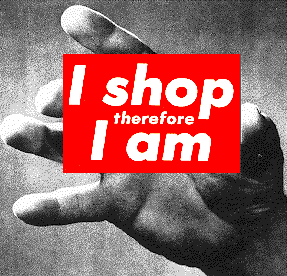Consumption of stuff
Amazing – 10 blog posts in 18 days. The first 10 posts here took 6 1/2 years to come… a trend to continue?
When I first came to live in Calgary, my family and my grandparents lived in a 1200 sq. ft. bungalow - all of us! Today, My slowly growing family is finding our 1350 sq. ft. bungalow a bit too small, and I've been questioning why that is. I suspect it is just that we (bigger WE) keep accumulating more stuff, and need to have bigger houses to keep it all in. Need to figure this out, and on a grander scale how to support its demise. Pulling in some of my other thoughts on the matter, there was at one time the idea that resources were limitless (Hardin), and once we had depleted the resources of one region we would simply move on to the next, conquer and take over that region, and use the resources there. Sounds like a fine idea, until we run out of new regions to conquer. We have yet to truly internalize environmental costs, mostly because our inherited system of economics does not do so, and progress (as a model) does not include them. It seems fine to provide a discourse on the matter, to have think tanks, economists and scientists alike, bring forth the idea of internalizing these costs, but there is a level of inertia at play that inhibit international institutes from doing so. As such, with the support of old-tech political and economic systems, we will continue to extract from and degrade ecosystems for the sake of meeting our understanding of economic progress.
But wait – maybe there is hope. Society is becoming aware of the plight of the planet, of impoverished peoples. International institutes are seeing the extent of the planet, and that we don’t yet have another one to move on to. This is leading to a mindset of conservationism, of placing restrictions on exploitation of certain geographic zones to keep them as reserves for the maintenance and sustenance of precious ecosystems. Modern social and economic development is now becoming sympathetic to the needs of ecosystems in these reserves as well as in the wider landscape.
Competition and innovation with clean-tech can lead to this sustainable relationship. I suppose you could say that I am a technocratic optimist. Will the consumerism be left behind? Unfortunately, there was nothing from the readings that give me that optimism... more just a better understanding of the “why” we’ve come to where we are now. Perhaps knowing the "why" may be enough to make that change.
For the wealthy of the world, they can buy a conscience, because they can afford to do so. Too bad the poor people of the world can’t afford to shop right and save the planet. Right? Reminds me of the 99% movement. The wrong people are able to make the right choices for the wrong reasons.
Focusing on extrinsic values such as popularity and image, you create consumers. Perhaps this may feel distasteful, but how can you devalue the impact of these variables? It drives to an erosion of the individual, questioning what the “better future” will actually look like. I’d say, rather, that we need to find the intersection between the two realms of intrinsic and extrinsic values.
We are a fragile bunch, framing and creating ourselves in a material world and a chase for lifestyle.











